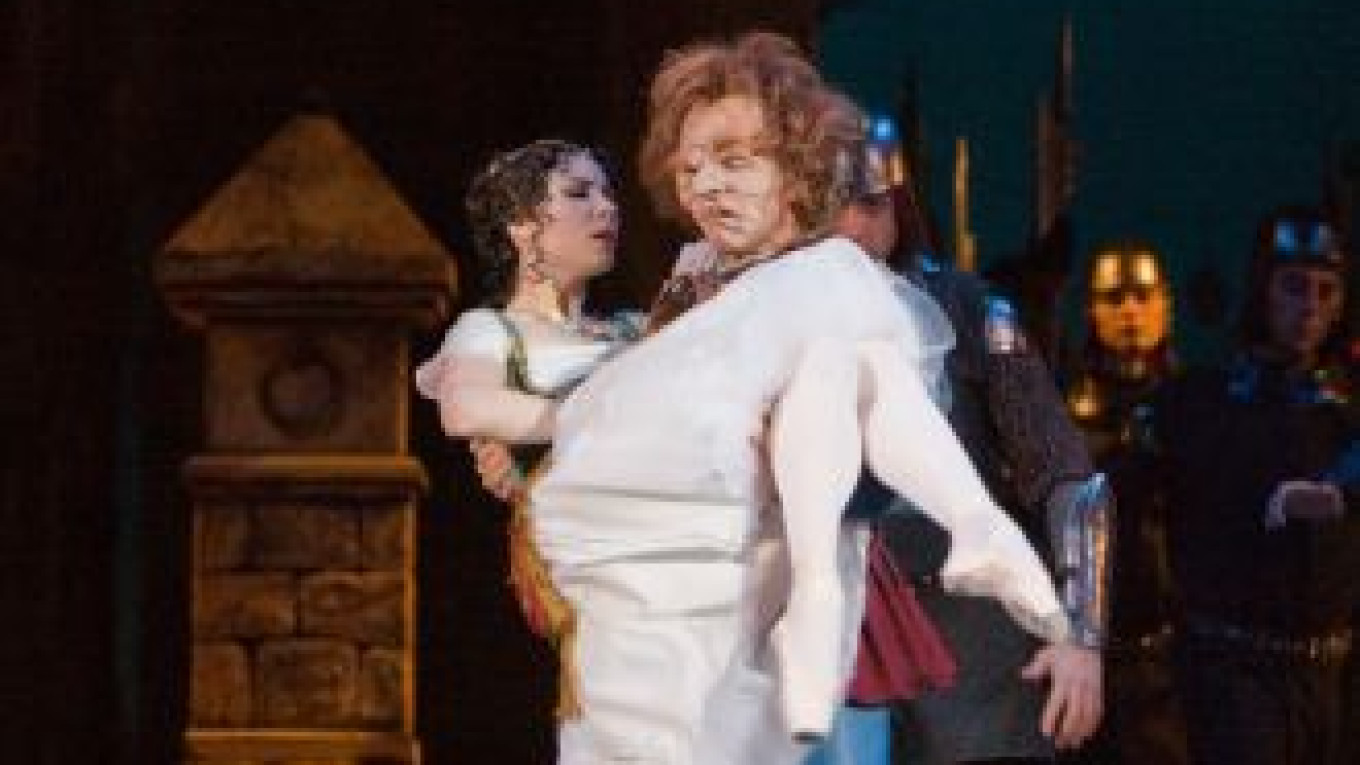The first of the Petipa reconstructions to appear was “Le Corsaire,” which premiered in the summer of 2007. Last season saw the addition of “Coppelia” and the Grand Pas Classique from “Paquita.” And at the end of December, the Bolshoi mounted “Esmeralda,” in a reconstruction that purports more or less to follow Petipa’s 1899 staging for the Mariinsky Theater.
“Esmeralda,” based on Victor Hugo’s well-known novel “Notre Dame de Paris,” was first seen at the Bolshoi in 1850 and, in various choreographic guises, enjoyed great popularity there until its disappearance in the 1930s.
In charge of last month’s “Esmeralda” reconstruction were Bolshoi ballet artistic director Yury Burlaka and St. Petersburg-based choreographer Vasily Medvedev. Both they and the team under their direction obviously put an immense effort into the project, one that included scouring archives in St. Petersburg and Moscow, as well as in Naples, Italy and at Harvard University, for the drawings and photographs, memoirs, musical scores and choreographic notations needed to fashion a reconstruction.
The result turned out to be a sumptuous affair, with massive, realistic sets and more than 400 elaborate costumes, all based on 19th-century designs, plus a large helping of dance, much of it on a very grand scale. But for all of that, I came away from the premiere with a feeling that what I had watched ultimately amounted to little more than a huge and expensive academic exercise.
Though the production might rightly be judged a colossal waste of effort and money, there was much to admire in the performance on opening night. The title role found ballerina Maria Alexandrova in the very best of form, dancing with dynamism and precision and doing all she could under the circumstances to give the part nuance and character. Praiseworthy as well were her two partners of the evening, Denis Savin, as the penniless poet Pierre Gringoire, and Ruslan Skvortsov, as Phoebus, Captain of the King’s Archers, along with nearly everything that was to be seen danced by the corps de ballet.
Interpolated into the second act was dance from a later era, the “Diane and Acteon Pas de Deux,” created by Agrippina Vaganova, probably the greatest of all Russian ballet teachers, for her staging of “Esmeralda” at the Mariinsky in 1935. Though appearing somewhat out of place, it nevertheless gave Bolshoi wunderkind Ivan Vasilyev a chance to thrill the audience with his usual display of gravity-defying leaps and airborne turns.
Some of the other solo dancing on opening night, however, verged on the disgraceful. And the ballet’s score, mostly by those two familiar purveyors of Petipa-era ballet music, Cesare Pugni and Riccardo Drigo, was given loud and often unruly treatment under the baton of the usually reliable Pavel Klinichev.
Of the Bolshoi’s four Petipa restorations, “Le Corsaire” seems the only one that can be counted a real success. And the reason is almost certainly to be found in the fact that, unlike the other three, “Le Corsaire” had a true master of the art of dance, in the person of former Bolshoi ballet artistic director Alexei Ratmansky, for its overall direction and for the creation of new choreography to fill the many gaps in surviving notations of Petipa’s original work.
Just a month prior to the Bolshoi premiere of “Esmeralda” another version of the ballet made its reappearance at the Stanislavsky and Nemirovich-Danchenko Musical Theater. Though the latter may lack choreography with the stamp of genius found in some segments of the restored Petipa, it far outstrips the new Bolshoi version in terms of drama. And, at its premiere, it featured not only dancing of a very high standard but also an enthusiasm and vitality that often seemed missing at the Bolshoi.
The new “Esmeralda” will undoubtedly give much pleasure to those content with mere spectacle or who wish to see the Bolshoi become a sort of dance museum. But I can imagine that Petipa himself would not be among those welcoming the addition of yet another reconstruction of his works to the theater’s repertoire. Instead of repeated attempts to conjure up, in wholesale fashion, a form of ballet intended for dancers with physical characteristics and audiences with an aesthetic perception quite different from those of today, my guess is that Petipa, a great innovator in his own time, would have much preferred to see his legacy used to inspire new works that move dance forward into territory that still remains unexplored.
“Esmeralda” next plays on Feb. 9 and 10 at the New Stage of the Bolshoi Theater, located at 1 Teatralnaya Ploshchad. Metro Teatralnaya. Tel. 250-7317, www.bolshoi.ru.
A Message from The Moscow Times:
Dear readers,
We are facing unprecedented challenges. Russia's Prosecutor General's Office has designated The Moscow Times as an "undesirable" organization, criminalizing our work and putting our staff at risk of prosecution. This follows our earlier unjust labeling as a "foreign agent."
These actions are direct attempts to silence independent journalism in Russia. The authorities claim our work "discredits the decisions of the Russian leadership." We see things differently: we strive to provide accurate, unbiased reporting on Russia.
We, the journalists of The Moscow Times, refuse to be silenced. But to continue our work, we need your help.
Your support, no matter how small, makes a world of difference. If you can, please support us monthly starting from just $2. It's quick to set up, and every contribution makes a significant impact.
By supporting The Moscow Times, you're defending open, independent journalism in the face of repression. Thank you for standing with us.
Remind me later.


